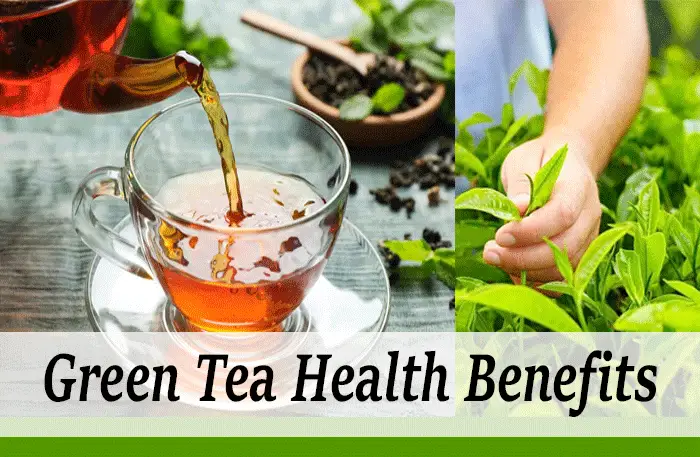
Camellia sinensis is a species of evergreen shrub or small tree in the flowering plant family Theaceae. Its leaves and leaf buds are used to produce the popular beverage tea. White tea, yellow tea, green tea, oolong, dark tea (which includes pu-erh tea), and black tea are all harvested from Camellia sinensis but are processed differently to attain varying levels of oxidation with black tea being the most oxidized and green being the least. Kukicha (twig tea) is also harvested from Camellia sinensis but uses twigs and stems rather than leaves.
The Camellia sinensis plant is native to East Asia but is now grown in many parts of the world. It is a hardy plant that can tolerate a wide range of climates. The leaves of the plant are harvested in the spring and summer months. They are then processed and dried to make tea.


Uses of Camellia sinensis
Tea is a popular beverage all over the world. It is enjoyed for its taste, caffeine content, and health benefits. Studies have shown that tea can help to improve heart health, reduce the risk of cancer, and boost the immune system.
- Improve heart health: Tea contains compounds called flavonoids, which have antioxidant and anti-inflammatory properties. These compounds can help to protect the heart against damage from free radicals, which are unstable molecules that can damage cells. Studies have shown that people who drink tea regularly have a lower risk of heart disease than those who don’t drink tea.
- Reduce the risk of cancer: Tea contains other compounds called catechins, which have also been shown to have antioxidant and anti-inflammatory properties. Catechins can help to kill cancer cells and prevent cancer cells from growing. Studies have shown that people who drink tea regularly have a lower risk of developing certain types of cancer, such as lung, breast, and colon cancer.
- Boost the immune system: Tea contains caffeine, which can help to improve alertness and cognitive function. Tea also contains L-theanine, an amino acid that can help to promote relaxation and reduce stress. These effects can help to boost the immune system and fight off infection.
Read Also: Ginger for Arthritis: How To Make Ginger Tea For Joint Pain
Health Benefits of Camellia Sinensis
In addition to the specific uses mentioned above, tea has also been shown to have a number of other health benefits. These benefits include:
- Reduce the risk of Alzheimer’s disease and Parkinson’s disease: Tea contains compounds that can help to protect the brain against damage from free radicals. These compounds may help to reduce the risk of developing Alzheimer’s disease and Parkinson’s disease, which are neurodegenerative diseases that are caused by damage to the brain.
- Lower blood pressure: Tea contains compounds that can help to relax the blood vessels and lower blood pressure. This can help to reduce the risk of heart disease and stroke.
- Lower cholesterol: Tea contains compounds that can help to lower LDL (bad) cholesterol and raise HDL (good) cholesterol. This can help to reduce the risk of heart disease and stroke.
- Improve blood sugar control: Tea contains compounds that can help to improve insulin sensitivity and lower blood sugar levels. This can help to reduce the risk of type 2 diabetes.
- Protect against sunburn: Tea contains compounds that can help to protect the skin from the sun’s harmful UV rays. This can help to reduce the risk of developing skin cancer.
How to Make Green Tea
Green tea is a delicious and healthy beverage that can be enjoyed hot or cold. It is made from the leaves of the Camellia sinensis plant, which are steamed or pan-fried to prevent oxidation. This process helps to preserve the tea’s natural flavor and nutrients.
To make green tea, you will need:
- Green tea leaves
- Hot water
- A teapot or cup
- A strainer
Here are the steps to make green tea:
- Rinse the green tea leaves with hot water. This will help to remove any dust or dirt from the leaves.
- Add the green tea leaves to the teapot or cup.
- Pour hot water over the leaves. The amount of water you use will depend on how strong you like your tea.
- Let the tea steep for 3-5 minutes.
- Strain the tea and enjoy.
Health Benefits of Green Tea: Beyond its delightful taste, green tea offers an array of health benefits:
- Antioxidant Powerhouse: Green tea is rich in antioxidants, such as catechins and flavonoids, which help protect cells from damage caused by free radicals. These antioxidants contribute to overall well-being and may reduce the risk of chronic diseases.
- Weight Management Support: Green tea has been associated with modest weight loss and improved metabolism. It can aid in fat oxidation and may help boost the body’s calorie-burning abilities.
- Heart Health: Regular consumption of green tea has been linked to a reduced risk of heart disease. It may help lower cholesterol levels, decrease blood pressure, and improve overall cardiovascular health.
- Brain Function: The combination of caffeine and the amino acid L-theanine in green tea can improve brain function, including memory, attention, and alertness. It provides a calm and focused energy boost without the jittery effects often associated with coffee.
- Immune System Support: Green tea contains compounds that support a healthy immune system, helping the body defend against illness and infections.
FAQs
Is Camellia sinensis plant Same as Green Tea Plant ?
Yes, Camellia sinensis is the plant species from which green tea, as well as other types of tea, is derived.
What Teas Are Not Made From The Camellia Sinensis Plant
Teas that are not made from the Camellia sinensis plant are called herbal teas, tisanes, or infusions. They are made from a variety of herbs, flowers, fruits, and spices. Some popular herbal teas include:
- Chamomile tea: Made from chamomile flowers, chamomile tea is known for its calming properties.
- Hibiscus tea: Made from hibiscus flowers, hibiscus tea is a tart and refreshing beverage that is often enjoyed iced.
- Ginger tea: Made from ginger root, ginger tea is a warming and soothing tea that can help to settle an upset stomach.
- Peppermint tea: Made from peppermint leaves, peppermint tea is a refreshing and minty tea that can help to relieve nausea and indigestion.
- Rooibos tea: Made from rooibos bush leaves, rooibos tea is a caffeine-free tea that is high in antioxidants.


